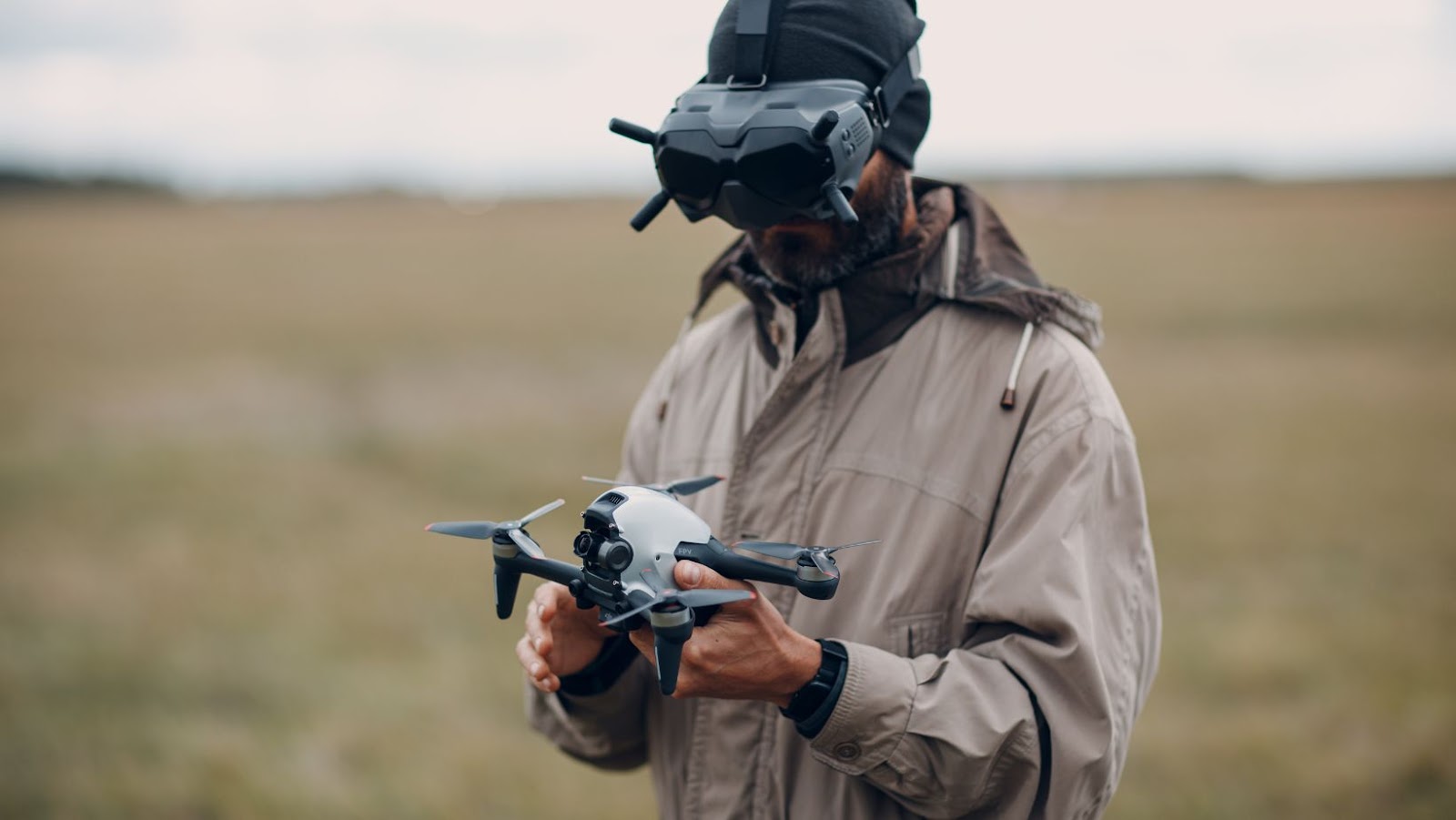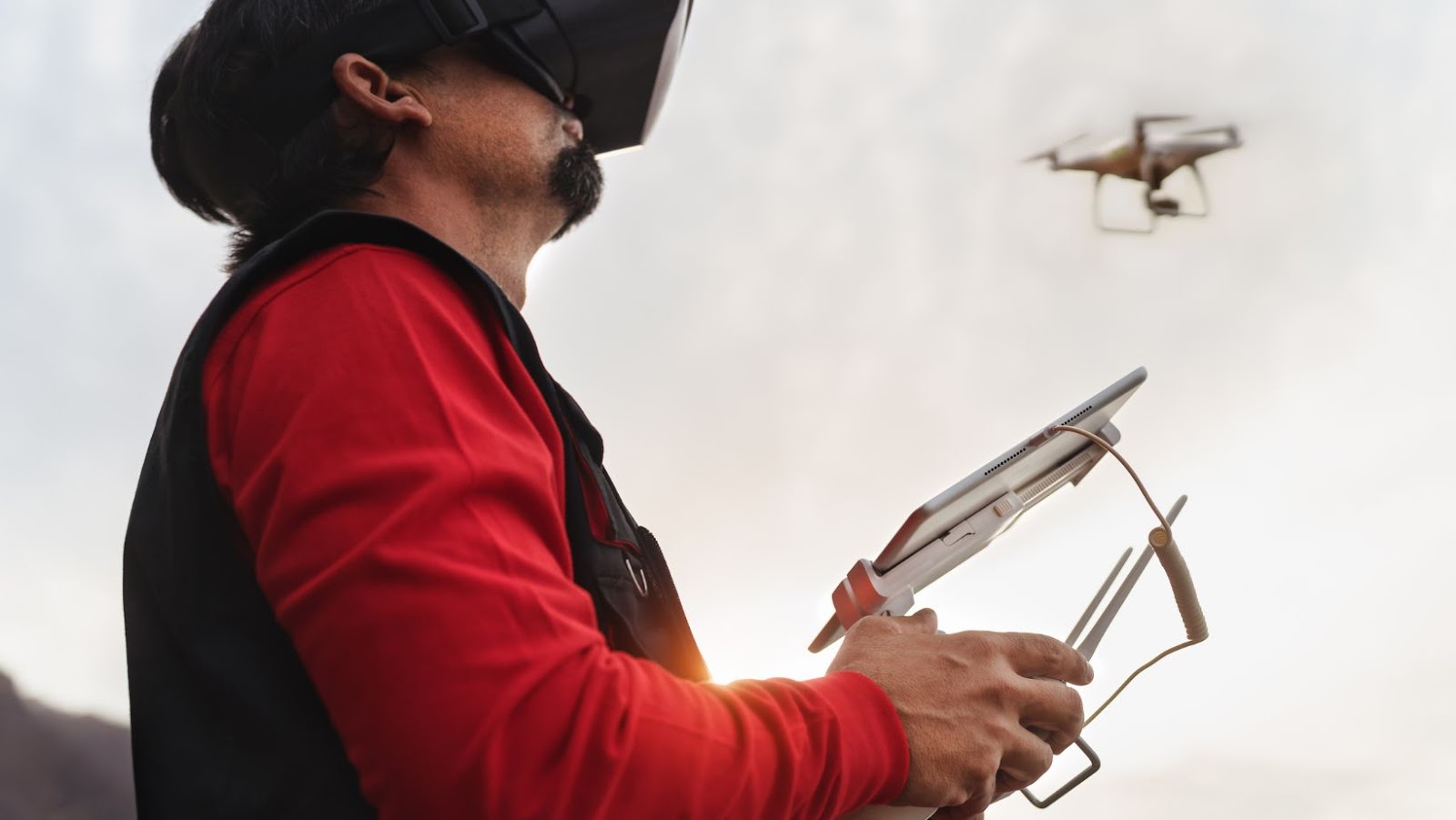 Drone with Virtual Reality Headset
Drone with Virtual Reality Headset
Drones equipped with virtual reality headsets offer an immersive experience by providing a real-time first-person view (FPV). This technology allows users to pilot drones as if they were in the cockpit, enhancing control and situational awareness. Drones with VR headsets are used widely in industries such as real estate, agriculture, and cinematography.
Real estate professionals use VR drones to create detailed property tours. This approach allows potential buyers to explore properties remotely, saving time and resources. Example: A realtor can provide a virtual tour of a large estate, showing every angle and detail without the buyer needing to visit in person.
In agriculture, VR drones help farmers monitor crop health efficiently. By flying over fields, drones capture high-resolution images and videos, which farmers can analyse in real-time. This functionality helps identify issues like pest infestations or irrigation problems promptly.
Cinematographers use VR-equipped drones to capture dynamic aerial shots. With the ability to see exactly what the drone’s camera sees, filmmakers can frame shots precisely and create stunning visuals. Example: VR drones are used in filmmaking to capture complex scenes over vast landscapes, maintaining a consistent perspective.
Typical drones with VR headsets come with high-definition cameras, long battery life, and advanced stabilization systems. These features ensure smooth and clear footage, enhancing the user’s experience. Example: A drone with a 4K camera and a 30-minute flight time provides high-quality visuals and ample exploration time.
Using a VR headset with a drone significantly enhances the user experience. The VR headset creates an immersive environment, making drone piloting more intuitive and engaging. Example: Users can experience flying through canyons or over mountain ranges as if they were there in person.
This combination of drones and VR headsets continues to grow in popularity, driven by advancements in technology and the increasing demand for immersive experiences across various industries.
 Key Features To Look For
Key Features To Look For
Choosing the right drone with virtual reality headset requires paying attention to several crucial features. These features dictate the overall performance and user experience. High-definition cameras are essential for capturing clear, detailed footage from the drone. Look for drones with 4K resolution or higher for optimal image quality. Some models also include features like optical zoom and image stabilization, which enhance clarity and reduce blur. For instance, the DJI Mavic Air 2 offers 48MP photos and 4K/60fps video recording.
Long battery life ensures extended flying sessions without frequent interruptions. Drones typically offer battery life ranging from 20 to 30 minutes per charge. Selecting a model with options for easy battery swaps can maximize flight time. The DJI Phantom 4 Pro, for example, provides up to 30 minutes of flight time with a rechargeable battery.
A strong, reliable connection between the drone and the VR headset is crucial for a seamless FPV experience. Consider drones with a transmission range of at least 4 miles (6.4 km) for uninterrupted control and video feed. Models like the DJI Mavic 2 Pro use OcuSync 2.0 technology for stable, long-distance connectivity.
User-friendly controls and intuitive interfaces make piloting drones accessible to beginners and professionals alike. Look for features such as one-touch takeoff and landing, GPS-assisted flight, and obstacle detection systems. The Holy Stone HS720, for example, offers simple controls and smart flight modes, enhancing ease of use. These features ensure a smooth and enjoyable flying experience.
 Top Brands And Models
Top Brands And Models
Several top brands stand out when it comes to drones with VR headsets. Each brand offers unique features catering to different needs and skill levels, making it easier for consumers to find the perfect match.
DJI, a leader in drone technology, offers a range of drones compatible with VR headsets. The DJI Phantom 4 Pro features a 20MP camera and a 30-minute flight time, providing high-quality footage and extended sessions. Another notable model, DJI Mavic Air 2, boasts 4K video capture and intelligent flight modes, ensuring ease of use and impressive aerial photography.
Parrot’s Anafi series stands out for lightweight designs and exceptional camera quality. The Parrot Anafi FPV includes a 4K HDR camera and a unique tilt gimbal, allowing for dynamic shooting angles. With a 25-minute flight time, it suits both professional and recreational users. Parrot also offers the Bebop 2 Power, known for its durability and robust connectivity, ensuring stable VR experiences.
Holy Stone provides budget-friendly options without compromising on features. The Holy Stone HS720 comes equipped with a 2K FHD camera and GPS-assisted flight, offering reliable performance and ease of navigation. Meanwhile, the Holy Stone HS100G provides 1080p video and a 15-minute flight time, suitable for beginners seeking immersive FPV experiences.